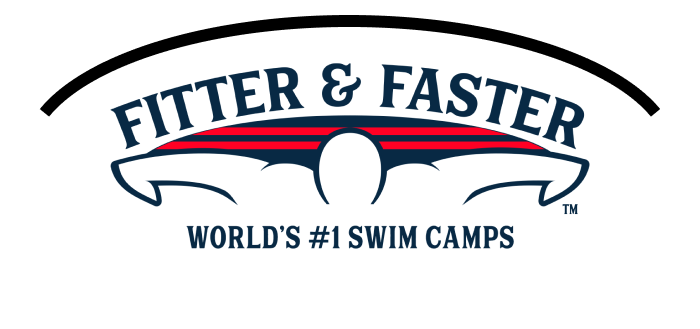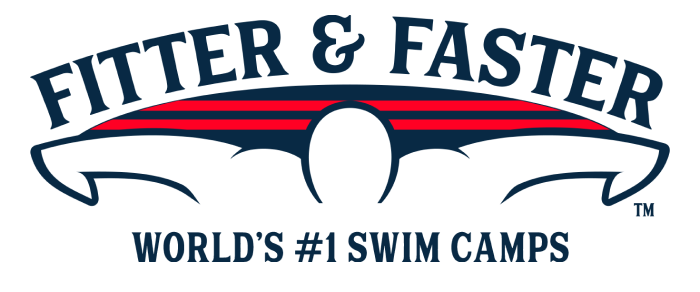Madison, New Jersey Swim Camp Series (Ages 12 & Over), Madison, NJ
Madison Area YMCA (MAY)
111 Kings Rd,
Madison,
NJ 07940
- days
- hours
- minutes
- seconds
Introduction
Fitter & Faster is producing a series of swim camps for competitive swimmers ages 12 & over at the Madison Area YMCA in Madison, New Jersey, in 2025 & 2026! Click here for the swim camp page for ages 9 to 11
MADISON, NEW JERSEY SWIM CAMP SERIES (Ages 12 & Over)
-> How to Race Fast IM's & 200's Swim Camp (November 8 & 9, 2025)
-> Fast Starts, Turns, Underwaters & More Swim Camp (March 21 & 22, 2026)
-> Comprehensive Backstroke Racing Swim Camp (September 19 & 20, 2026)
Click the “Curriculum Menu” below for details about each swim camp.
✔️ Each session has limited availability to provide a focused, high-quality learning environment.
💡 SAVE when you purchase the “Entire Camp Bundle” for your swimmer.
Select a curriculum below
HOW TO RACE FAST IM's & 200's SWIM CAMP: November 8 & November 9, 2025
“How should I swim this race?” It’s a common question for swimmers tackling IM events or the challenging 200. Pacing and strategy can feel complicated because success depends on rhythm, stroke transitions, and smart energy distribution rather than just hitting splits. This camp is designed to give swimmers the tools to race with confidence.
- DAY 1 (Saturday, November 8): ESSENTIAL IM SKILLS : Being successful in Individual Medley (IM) events takes more than just being good at each stroke. Great IM’ers know how to connect the pieces—using transitions, turns, and strategy to gain momentum and separate from the competition. At this camp, your swimmer will work on building IM races that are greater than the sum of their parts.
- STROKE TRANSITIONS: Each stroke uses different muscle groups and movement patterns, so switching from one to the next isn’t as simple as it seems. Transitions take practice, awareness, and good technique. Our clinicians will work with your swimmer on drills and technical tips that help them move more smoothly and efficiently between strokes—saving time and energy every time they race.
- IM TURNS: Turns in IM races are their own skill set. They can be tricky—especially the back-to-breast turn, which is completely different from other transitions. We’ll break down each IM transition turn and give swimmers the coaching they need to feel confident and consistent.
- OVERCOMING A WEAK STROKE: Almost every swimmer has a stroke that lags behind the others—but top athletes find ways to minimize its impact. Whether it’s adjusting technique or maximizing strengths like underwater pullouts, our clinicians will give your swimmer tools to be more effective in their least comfortable stroke.
- IM Strategy: Racing IM well means having a plan for how to pace and distribute effort across all four strokes. That plan looks different for every swimmer. Our experienced clinicians will help your swimmer understand how to manage energy, play to their strengths, and adjust strategy as needed. Sometimes that even means holding back a bit on a strong stroke to save energy for a weaker one. Your swimmer will leave with a greater understanding of how to approach their IM races.
- DAY 2 (Sunday, November 9): DEVELOPING FAST 200's: Races of 200 yards and meters are some of the most fun to swim and watch because of the wide variety of strategies that swimmers use. There are many different ways to swim a fast 200 in every stroke. The name of the game is understanding all the different ways to execute the race and seeing what works for you!
- STRATEGIES: At this camp your swimmer will learn various strategies that elite swimmers have executed with top results. Before your camp you will be emailed links to several elite level races of 200 yards or meters across all strokes, along with a brief summary of each. At the camp we will discuss and practice those strategies.
- "EASY SPEED": Establishing stroke length with the proper tempo after the breakout is essential to setting up a strong 200 in any stroke. Going as fast as we can with ease is the key to “easy speed”. We don’t want to kick or pull too hard on the first 50. This will cause early fatigue. Swimmers will work on techniques to swim as fast as they can in all strokes with “ease”.
- CONTROL: Your elite clinician will teach participants how to manipulate their speed and energy at different points in a race.
- FRONT-END & BACK-END SPEED: The first 100 (front-end) and second 100 (back-end) of the 200 can be broken up to ensure an effective plan. Some swimmers go out really fast and hang on, while others control the first 100 and try to back-end the race at full speed. Testing new strategies at this camp will give your swimmer confidence in their next race.
- UNDERWATER KICK COUNT: Figuring out the optimal number of kicks off each wall is essential to a fast 200. A swimmer wants to spend only the absolute necessary amount of time underwater to establish speed with each length. We want to avoid losing our breath and/or taking weak kicks.
- BREATHING PATTERN: Establishing a breathing pattern will help the swimmer stay focused and relaxed on their own swim. It will also help them finish the race with enough oxygen to close the race at full speed.
- ESTABLISHING A PLAN: A racer should have a plan for the race before it is swum! What’s your plan for front-end and back-end speed? How much time will you spend underwater before your first breath? How often will you breath each length?
- TEST THE PLAN IN PRACTICE: Now we test it! Swimmers will do a complete short set at the end of the session to practice racing the plan and stroke under race conditions. We’ll get off the blocks and practice some front end swims, push some back end swims, and race some straight 200’s.
- CONFIDENCE: One of the essential elements to dropping time and swimming fast is being willing to try new strategies when swimming a race. It’s ok to feel nervous and a little bit uncomfortable before your race! Entering a race with a strategy will help your swimmer with their confidence… and that confidence will help propel them to the results they aim to achieve.
FAST STARTS, TURNS, UNDERWATERS & MORE SWIM CAMP: March 21 & March 22, 2026
The momentum generated from explosive starts and turns are the FASTEST that top age group swimmers and elite swimmers are moving in a race! The more efficient, powerful and hydrodynamic your swimmer is, directly impacts their speed and distance they travel in the water before taking their first stroke!
- DAY 1 (Saturday, March 21): STARTS, UNDERWATERS & BREAKOUTS: The better a swimmer’s technique is off the starting block, the more speed they will carry into the water. Day 1 of this swim camp will help your swimmer improve their start, underwater dolphin kicking and breakouts! This sequence is not only the fastest part of every race, but it is also the part of the race in which elite swimmers cover the most ground with the most efficiency.
- Block Starts: To ensure an explosive start, a swimmer needs to set themselves up properly on the block. The elite clinicians will work with participants on the optimal positioning of your swimmer’s entire body to allow for a quick reaction time and optimal speed.
- Water Entry: Starting the race with a smooth entry into the water will boost your swimmer's speed and carry the momentum generated off the block or wall. Becoming skilled at the water entry is crucial for any start and significantly contributes to your swimmers' overall race!
- Streamline: The streamline - when done properly - is the fastest a swimmer travels while in the water. Proper streamlines are even faster than underwater dolphin kicking. Even the most elite swimmers in the world are constantly working on improving their streamline. Your swimmer will get tips to improve their streamline and a better appreciation of what they need to do on every single wall in practice and in races.
- Initiating Underwater Dolphin Kicking: Top age group and elite swimmers maximize their streamline on every single lap. They don’t start their underwater dolphin kicking while they’re still achieving maximum speed in their streamline! They also don’t want to start the underwater dolphin kicking after their streamline has begun to slow. Your swimmer is going to learn how to time when to begin their underwater dolphin kicking.
- Powerful Underwater Dolphin Kicking: There are a few different techniques that swimmers use when underwater dolphin kicking. The common theme of these techniques is that the best swimmers kick up and down with equal power. We will show your swimmer the different techniques that elite swimmers use and teach them how to implement.
- Number of Underwater Dolphin Kicks: Figuring out the optimal number of kicks off each wall, for each race, is essential to fast swimming. Elite swimmers want to spend only the absolute necessary amount of time underwater to establish speed with each length. They want to avoid losing their breath and taking weak kicks.
- Breakouts: Many swimmers unintentionally add movements in their breakouts that reduce speed by creating drag. In this camp, participants will focus on perfecting their breakout timing to maintain momentum and power into each lap.
- DAY 2 (Sunday, March 22): FLIP TURNS, OPEN TURNS & FINISHES: Quick, powerful turns and finishes are crucial to fast times and winning close races. The top age group and elite swimmers aren't using walls just for turning around - they are used to generate speed and momentum going into the next lap. Elite swimmers are constantly working their turns and looking for areas to improve them. Today, we're going to work with your swimmer on taking this crucial part of every race (and practice) to the next level!
- Momentum: At the elite level of swimming, walls aren’t just used for turning around - they are used to generate speed and momentum going into the next lap. Outside of the elite ranks, most swimmers stop or slow down while going into the wall, which kills their momentum! We will work with participants on the intricacies of approaching every wall at top speed and seamlessly initiating their “turn”.
- Flip Turns: The fastest swimmers use walls to generate speed and momentum going into the next lap. Outside of the elite ranks, many swimmers stop or slow down while going into the wall, which kills their momentum! We will work with participants on the intricacies of approaching every wall at top speed and seamlessly initiating their “turn”.
- Open Turns: Elite butterflyers and breaststrokers utilize speed from their last lap to create momentum and even more speed at the beginning of the next lap. Their open turns are actually not “turns”, but more like high-speed pivots. Participants in this session will work on these techniques to have much faster open turns!
- Streamline, Underwater Dolphin Kicking, Breakout Progression: At this session participants will continue to work on the progression covered on Day 1.
- Finishes: Setting yourself up for a fast finish is very similar to setting yourself up for a strong turn in any race. Races are won and lost by hundredths-of-a-second at every swim meet. Many races come down to the last few strokes. At this camp, your swimmer will learn techniques to set themselves up for a well-timed finish when they are still about 10 yards from the wall.
COMPREHENSIVE BACKSTROKE RACING SWIM CAMP: September 19 & September 20, 2026
Over two days, your swimmer will work with Fitter & Faster's world-class clinicians to elevate their backstroke. They'll focus on refining bodyline, catch, kick, and pull for improved efficiency. They'll then explore strategies for tempo, stroke length, and efficiency to enhance their racing performance. Whether your swimmer is new to backstroke or looking to refine their technique, this camp offers valuable insights to help them progress in the pool.
- DAY 1 (Saturday, September 19): BACKSTROKE TECHNIQUE: While backstroke shares many concepts with freestyle, the actual skill can be much different. In this session, your swimmer will refine bodyline, rotation, kick, and pull specifically for backstroke.
- Bodyline: Backstroke bodyline should eliminate unnecessary movement. Even small amounts of bobbing or swaying create drag. Participants will learn to maintain a flat, aligned posture and engage the core to support a strong, stable position in the water.
- Rotation: Unlike freestyle, backstrokers rotate most fully onto their side when their hand is midway through the stroke. Rotation in backstroke is essential for two key reasons. First, to apply power during the pull, the swimmer’s hand must be positioned in front of the shoulder and at least a few inches below the surface of the water—something that’s only possible with proper body rotation. Second, rotation helps activate the large muscles of the back as the swimmer drives their hand through the surface and into the catch.
- Constant Motion: Unlike other strokes, backstroke has no built-in glide phase—the arms are always moving. Your swimmer will work on strategies to keep their stroke continuous and efficient, maximizing distance per stroke while maintaining tempo.
- Kicking: Effective backstroke kicking requires generating propulsion in both directions—both the forward and backwards motions. Your swimmer will learn to kick efficiently on their back, using ankle flexibility and consistent drive to support rotation and propulsion.
- Pull: Backstroke pull requires a high elbow catch, but also uses more of the full arm in the pull than any other stroke since the hand is pulls much further outside the body line. We will work on feeling that full pull and engaging the large muscles of the back to generate power.
- DAY 2 (Sunday, September 20): BACKSTROKE RACING AND TRAINING SKILLS: On Day 1, participants practiced high performance backstroke techniques. Now, let’s leverage these skills to develop strong racing and training habits. Learning to prioritize tempo and length of stroke, while maintaining efficiency has a huge impact on maximizing speed in backstroke.
- Stroke Length: A long stroke will enable your swimmer to “catch” and hold onto more water to propel them as they swim. Whereas, a short stroke is inefficient and not sustainable for very long. The clinicians will work with participants on this important skill for fast swimming.
- Tempo: Tempo is the rate at which a swimmer is moving their arms and legs. When sprinting short races many swimmers often tend to take too many strokes (“spin their wheels”) and not “hold onto the water”. At this camp we will explore different tempos that suit your swimmer for their backstroke races.
- Pacing/Control: A swimmer’s tempo will change depending on the backstroke race that they are swimming. It may also change at different points during the same race! Your elite clinician will teach participants how to manipulate their tempo, speed and energy at different points in a race. This is called Pacing or “Control”.
- Backstroke Starts: The fastest part of every single race is the start - that’s no different for backstroke! Your swimmer is going to learn and practice starting a high performance backstroke race. We’re going to work on a “clean”, fast water entry in which the athlete carries the momentum from the start into their streamline, underwater dolphin kicking and breakout.
- Speed Set: At the end of this session your swimmer will do a short and fast swim set to practice everything they have learned over the past two days.
SESSION START TIMES FOR ALL SESSIONS:
Check-in 12:30 PM, Camp 12:45-3:45 PM
SUGGESTED PARTICIPANTS:
Our top priority is to provide a world-class learning experience for all participants at all of our camps. This camp has sessions for swimmers ages 12 & Over. Participants will range from one-year of competitive swimming experience to AAAA times and faster.
ASK QUESTIONS
Swimmers and parents are invited to ask the clinicians questions during a Q&A session. Gain insight into their training regimen, diet and nutrition, and recovery tactics.
WATCH THE CLINICIANS
Observe clinicians swim at full speed and demonstrate a progression of perfectly executed drills to achieve powerful, efficient and fast swimming.
PUT YOUR SKILLS TO THE TEST
Throughout the camp, swimmers will practice what they've learned with some of the world's most elite Swimmer Clinicians and coaches!
Take a photo, get autographs, and chat with your clinicians!
Inquisitive, Educated Swimmers are Faster Swimmers! Sign up today!






